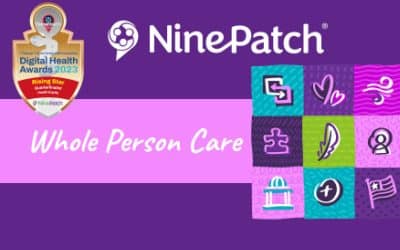
Z codes reimbursement is a popular topic. Are Z codes billable or reimbursable? What are the social determinants of health Z-codes? Learn about Z codes and a recent CMS proposal that encourages clinical and social care coordination to support underserved and vulnerable populations.
Collecting social determinants of health (SDOH) data that includes z codes may be a priority to reduce beneficiary costs if you are a payer, hospital system, clinically integrated network, physician’s office, or other healthcare organization working under CMS guidelines. A recent CMS proposed rule invites community-based organizations (CBOs) to join in these efforts
Understanding what happens between community-based organizations, payers, and health systems is critical to bridge SDOH gaps. Creating healthier populations means focusing on preventative health care while treating illnesses.
Success in this area for payers means lowering care costs and improving outcomes. Accountable care organizations (ACOs), clinically integrated networks (CINs), patient-centered medical homes, and physician practice staff document ICD-10-CM diagnosis and procedure codes daily.
What Are Z Codes?
CMS Z codes were created for billing social determinants of health. Originally z-codes were not tied to reimbursements, screenings, or assessments.
However a 2024 CMS proposed rule, calls attention to the documentation of z-codes by community health workers (CWH) and supervised CBO staff who provide integrated health services and sdoh care coordination.
If the CMS proposed rule becomes final as written, community services can be reimbursed by primary care organizations who receive data from CBOs and bill for services. One example is a coding crosswalk of CPT 99490 with the proposed health common procedure coding system (HCPCS) codes GXXX1-2.
Per CMS, “We are proposing to require the SDOH need(s) to be recorded in the patient’s medical record, and for data standardization, practitioners would be encouraged to record the associated ICD–10 Z–code (Z55–Z65) in the medical record and on the claim.”
Ten Categories of Z-Codes with 100 Sub-Categories
There are ten categories, z55-z65, with one-hundred sub-categories:
- Education and literacy (Z55)
- Problems related to employment and unemployment (Z56)
- Occupational exposure to risk factors (Z57)
- Problems related to the physical environment (Z58)
- Problems related to housing and economic circumstances (Z59)
- Problems related to the social environment (Z60)
- Problems related to upbringing (Z62)
- Other problems related to the primary support group, including family circumstances (Z63)
- Problems related to certain psychosocial circumstances (Z64)
- Problems related to other psychosocial circumstances (Z65)
Using Z-codes represents a challenge for organizations at varying stages of connecting patients with community health programs and gathering data. If z codes were created for billing but are considered optional, what function do they serve?
Addressing Z Code Circumstances Can Lower Costs of Care
Lowering clinical care costs means that payers hold providers accountable for data reporting on specific measures. Examples include reducing hospital readmissions, using healthcare technology, and improving preventative care.
A picture of a person diagnosed with diabetes released from the hospital who cannot afford to buy insulin illustrates a single gap between clinical and social care. Unfortunately, many similar stories remain unknown because many clinicians feel uncomfortable asking questions that social workers see as part of their daily job.
For example, a lack of transportation may result in patients not attending medical appointments. In addition, joblessness can lead to homelessness or becoming a victim of street violence. These examples mean that provider-patient contact is limited to hospital emergency room visits unless clinical and social care providers join to coordinate care.
The CMS Proposed Rule for 2024 Calls Attention to Z-Codes and Introduces G-Codes
Various assessments identify challenges specific to health-related social needs and open the door for cross-community referrals that include ICD-10 and Z codes.
If the CMS proposed rule is made final, primary care physician practices can be reimbursed to assess for SDOH as stated in the 2024 CMS recommendations. To support efforts to address sdoh, community health workers and CBOs, considered third party organizations, who integrate with billing practitioners may be reimbursed for care coordination efforts.
Proposed is a stand alone G code, GXXX5, specific to the administration of a standardized evidence based SDOH assessment billable for 5-15 minutes every six months.
Additional details about SDOH assessments, coding, crosswalks, RVUs, can be found in the CMS Proposed Rule of August 2023.
Payer SDOH Goals Link to Z Codes Reimbursements
A policy brief by NORC confirms three main payer goals specific to social determinants of health efforts:
- Identifying reliable sources for data on beneficiary SDOH and how to incorporate this information into clinical programs
- Deliver services or connect beneficiaries to services that address social needs
- Track health outcomes and ROI associated with interventions
The Centers for Medicare and Medicaid Services have increased focus on health-related social needs. It is well known that non-medical factors significantly impact chronic disease.
Taking an interest in an individual’s socioeconomic situation can provide support with education, literacy, employment, housing, abuse, dependency, or behavioral health concerns. In addition, the no-wrong-door approach to SDOH means that individual contact with a single provider can result in referrals to multiple helping organizations.
The Link Between Medicare, Medicaid, and Z Codes
A CMS study, Utilization of Z Codes for Social Determinants of Health Among Fee-for-Service Beneficiaries, confirms that family practice physicians, internal medicine, nurse practitioners, psychiatrists, and licensed clinical social workers most commonly initiated z code billing claims.
Most Z codes, 49.6%, were billed on Medicare Part B non-institutional claims. The five most utilized Z codes were:
- Homelessness (Z 59.0)
- Disappearance and death of a family member (Z63.4)
- Problems related to living alone (Z60.2)
- Problems related to living in a residential institution (Z59.3)
- Problems in relationship with spouse or partner (Z63.0)
This data confirms the impact of non-medical factors on health. Entering Z codes in patient charts for reimbursements can work toward ensuring high-quality, value-based care.
More recently CMS recommends that clinicians performing Medicare Annual Wellness Visits assess for sdoh needs and document the associated z-codes.
The Z Code Bridge to Address Health-Related Social Needs
So, you see, the goal of reducing hospitalizations and improving preventative care bridges health and social care systems. These improvements occur through data exchange. Advances in care and beneficiary cost reductions happen when:
- Community-based organizations learn the value of z-code documentation
- Providers support bi-directional data sharing with community-based organizations through care coordination and referral platforms
- Payers receive social determinants of health data from providers and verify outcomes
- Reimbursement sharing occurs across payers, providers, and community-based organizations to support vulnerable populations
All health and social care stakeholders have an important role for identifying social determinants of health concerns and entering z-code data that can result in share reimbursements. Reducing costs and improving health outcomes is possible when health and social care organizations collaborate to advance health and social care.
© 2023 NinePatch, Inc. All Rights Reserved.
Stay Up To Date
NinePatch® Recognized as Quarterfinalist for the Digital Health Hub Foundation: Digital Health Awards
NinePatch is a Rising Star in the Health Equity Track KNOXVILLE,...
SDOH and Care Coordination Programs and Funding
SDOH care coordination and funding is available from federal, state,...
Whole Person Healthcare Model Insights and Opportunities
A whole person healthcare model combines physical, behavioral, and...




